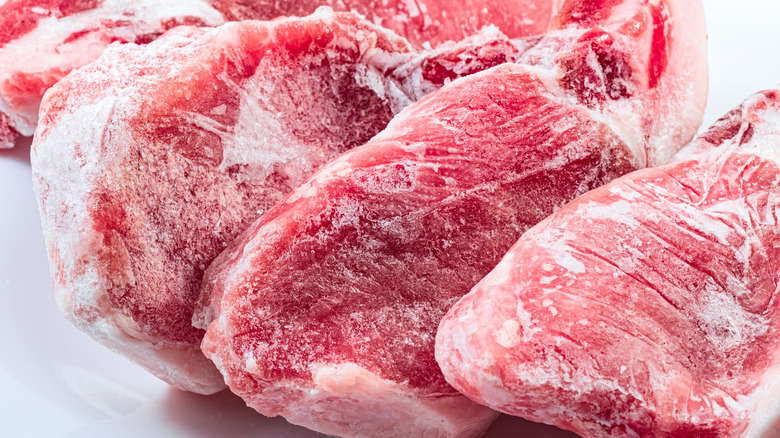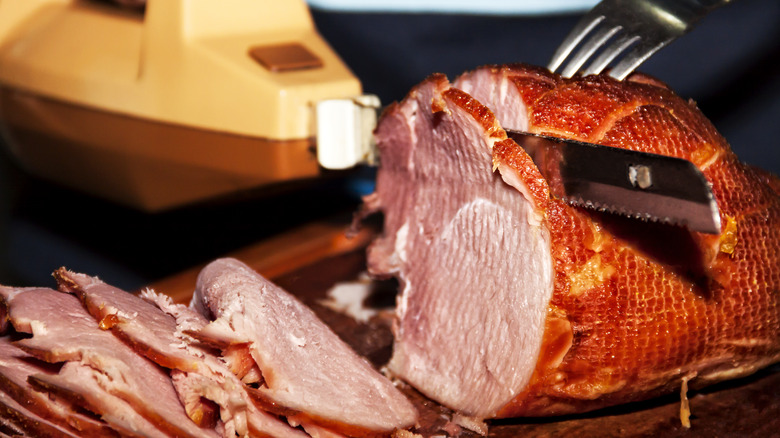Is It Possible To Cut Frozen Meat (& Should You?)
Unless you make daily trips to the grocery store to purchase fresh meat for dinner every night, odds are you probably have a few packages of meat in your freezer most of the time. Unfortunately, if you do this, you also have likely been faced with this question: What do you do when you don't need to cook the entire portion of frozen meat you purchased? If you expected to make a steak dinner for a group and someone canceled unexpectedly, what do you do with that extra chunk of icy steak?
The USDA does not recommend refreezing thawed meat. Although it can be safe to do if the meat has not been out of the refrigerator for more than an hour or two, it may lose flavor and moisture, which would make it unpleasant to eat when you do get around to re-thawing it.
Unless you plan to keep the meat in the fridge to cook the next day, the best course is probably to cook everything you took out of the freezer and save the excess for leftovers, or to take a stab at cutting it while it's frozen. Of course, the latter is easier said than done, but it is safe to do without compromising the quality of your meat — as long as you use the right tools.
Cutting frozen meat
So how should one go about divvying up a block of frozen roast? First, you are going to need to soften the meat. But this does not mean leaving it out for hours to defrost. Rather, leave the meat under running, room temperature water for a few minutes to soften up the exterior just enough to make a cut.
While it's possible to cut frozen meat with an ordinary, serrated kitchen knife, it's not highly recommended since it will take a lot of muscle and a knife with both a sharp edge and deeply serrated teeth. A better option is to use a dual-bladed electric kitchen knife. These knives are usually used for carving turkeys and roasts. However, the powerful electric blades should also carve through a solid piece of frozen steak or chicken — provided there aren't bones in the way.
If bones are an issue, you can take things up a notch and break out a saw, though this is rather intense for most home cooks. Similar to a hacksaw in appearance, a butcher's saw (or bone saw) is a more specialized tool because it has deeper, wider spaced serrated teeth that make it ideal for cutting through tough meat and even bones, which would cripple most standard knives and garage tools.
Once you're done simply put the excess meat in the freezer and leave the rest to defrost before cooking.

